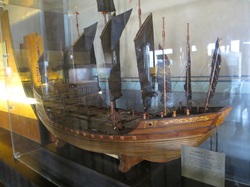 In 1422, Zheng He sailed the ocean blue.
In 1422, Zheng He sailed the ocean blue. Of the roughly eight bajillion emperors who have ruled China over the last several thousand years, Emperor Yongle (who reigned from 1402-1424) might have overseen the single most productive period of them all.
Apparently, he knew it even then because all the historical accounts describe him as a big braggart.
Here's what else we learned from our visits to the Forbidden City, which Yongle had built in downtown Beijing, and the Ming Tombs, where Yongle is buried.
Yongle (pronounced yong-lee) rose to power after hearing that his father had picked a grandson -- one of Yongle's nephew's -- as his successor. Yongle launched a military strike on his nephew, who was the second emperor of the Ming Dynasty. When Yongle's forces reached the palace, they set it ablaze. But the nephew/Emperor #2 was no where to be found. Some say he died in the fire, others think he escaped to the Philippines, while still others think he and Elvis are doing a traveling show together.
Once Yongle became third emperor of the Ming Dynasty, he made the most of it. Among his accomplishments, he:
The Forbidden City, which is across from Tiananmen Square, was so named because only the emperor and his family, guards, slaves, invited courtiers and employees were allowed in.
Apparently, he knew it even then because all the historical accounts describe him as a big braggart.
Here's what else we learned from our visits to the Forbidden City, which Yongle had built in downtown Beijing, and the Ming Tombs, where Yongle is buried.
Yongle (pronounced yong-lee) rose to power after hearing that his father had picked a grandson -- one of Yongle's nephew's -- as his successor. Yongle launched a military strike on his nephew, who was the second emperor of the Ming Dynasty. When Yongle's forces reached the palace, they set it ablaze. But the nephew/Emperor #2 was no where to be found. Some say he died in the fire, others think he escaped to the Philippines, while still others think he and Elvis are doing a traveling show together.
Once Yongle became third emperor of the Ming Dynasty, he made the most of it. Among his accomplishments, he:
- Led five expeditions against the Mongolians to keep them from invading.
- Established Beijing as the nation's capital because of its strategic usefulness to defend against the Mongolians.
- Commissioned an encyclopedia of an astounding 22,877 volumes. (Take that Britannica).
- Saw the perfection of the iron-casting technique.
- Saw the development of the trademark blue and white porcelain.
- Directed his trusted lieutenant Zheng He to embark on the world's the first major sea expedition, which reached the Horn of Africa, Saudi Arabia, India and Sri Lanka. (Take that Christopher Columbus).
- Ordered the construction of the Beijing city wall and the famed Forbidden City, which took 14 years and 400,000 citizens to construct.
The Forbidden City, which is across from Tiananmen Square, was so named because only the emperor and his family, guards, slaves, invited courtiers and employees were allowed in.
Fun fact: Many of the buildings in temples and palaces have statues near the rain spouts. These are actually mythical creatures from Chinese legends. There are 11 total mythical creatures. And the more a building has, the more important its occupants/purpose. (Thanks to our wonderful tour guide, Justin, for that info.)
The palace below featured all 11. The building that currently houses the bathrooms had three.
The palace below featured all 11. The building that currently houses the bathrooms had three.
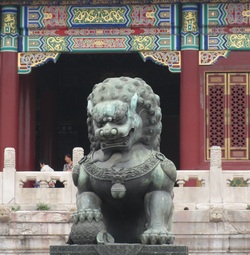 This is a fictional lion ... because China doesn't have any real ones.
This is a fictional lion ... because China doesn't have any real ones. Dragons are everywhere in the Forbidden City because they represent the emperor. Unlike European legend, dragons are good guys in China. They signify power bestowed by heaven.
Incense burners also are common features around the palace because they created a smoke effect that made it seem as if the palace was in a cloud -- in heaven.
That's not necessary now. The natural smog in Beijing provides that effect.
Incense burners also are common features around the palace because they created a smoke effect that made it seem as if the palace was in a cloud -- in heaven.
That's not necessary now. The natural smog in Beijing provides that effect.
- Ryan


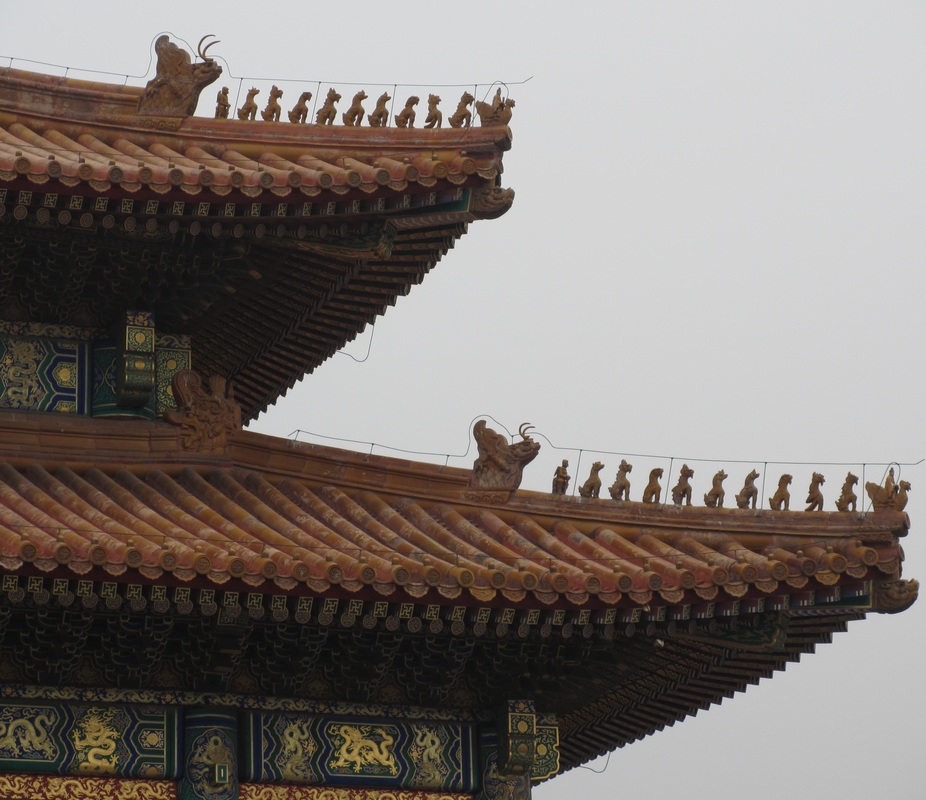
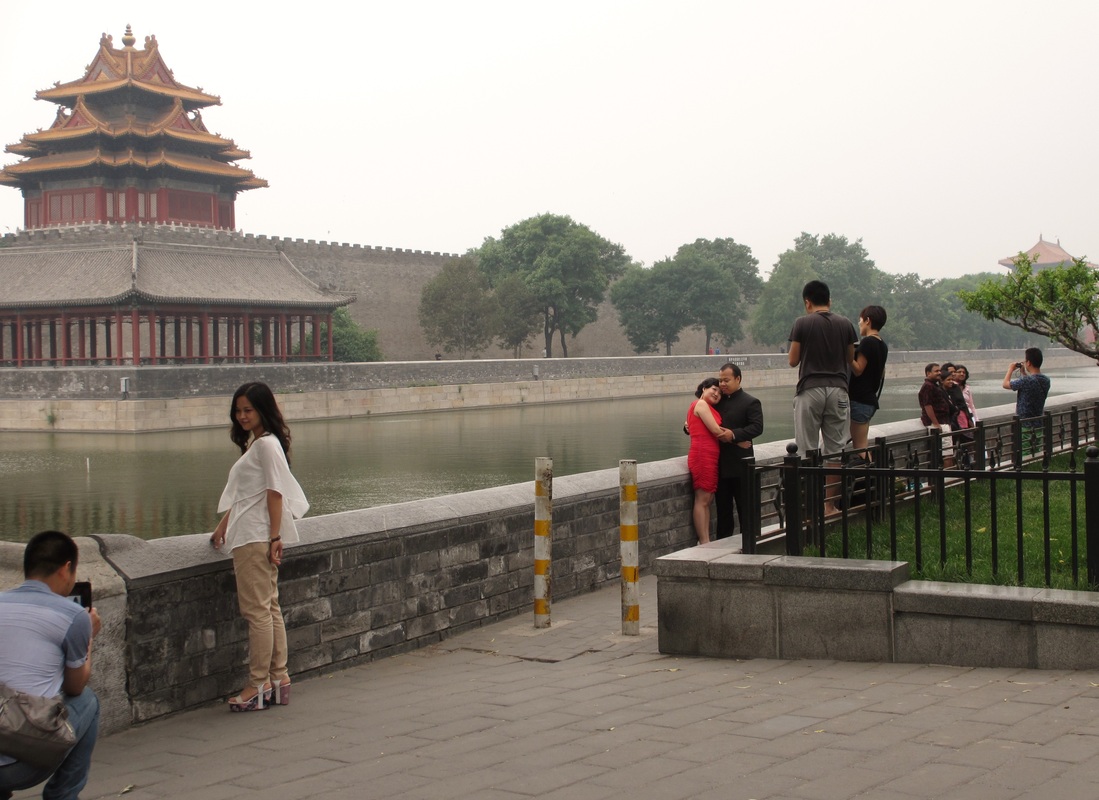
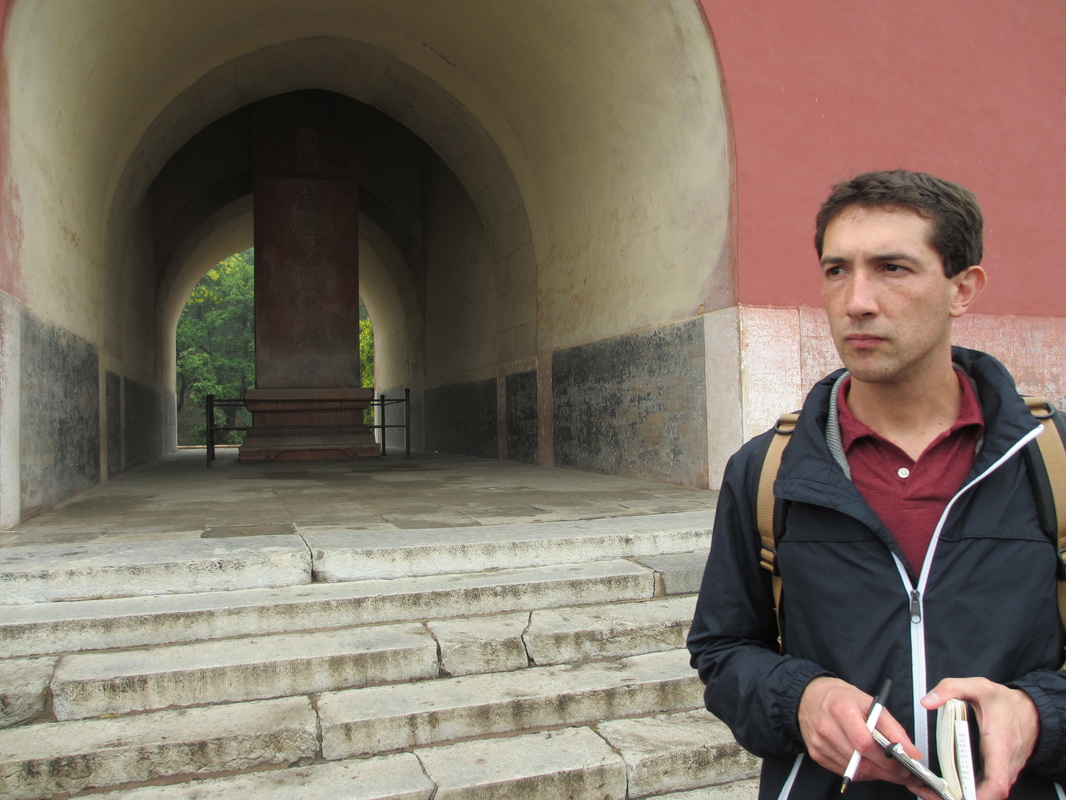
 RSS Feed
RSS Feed